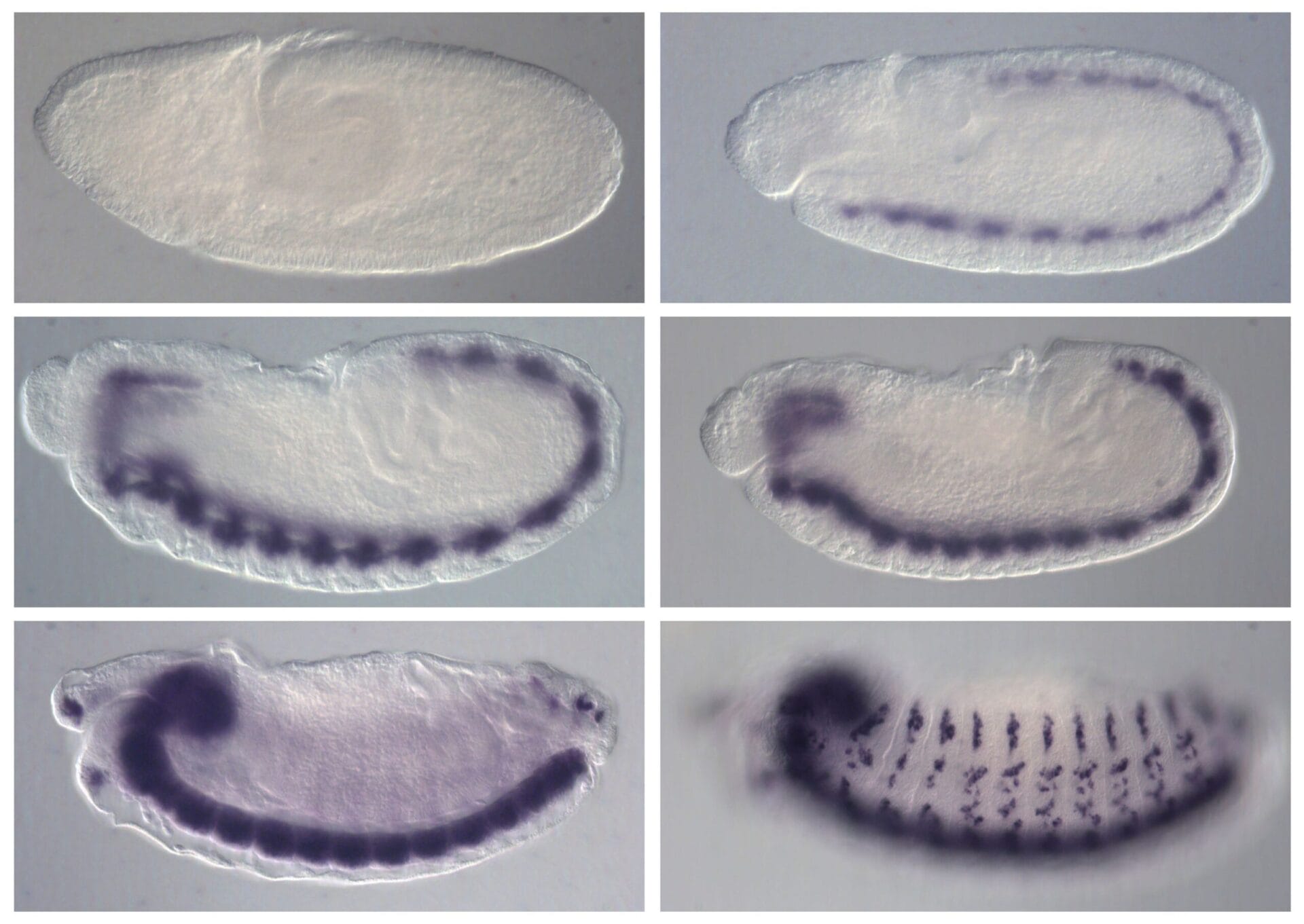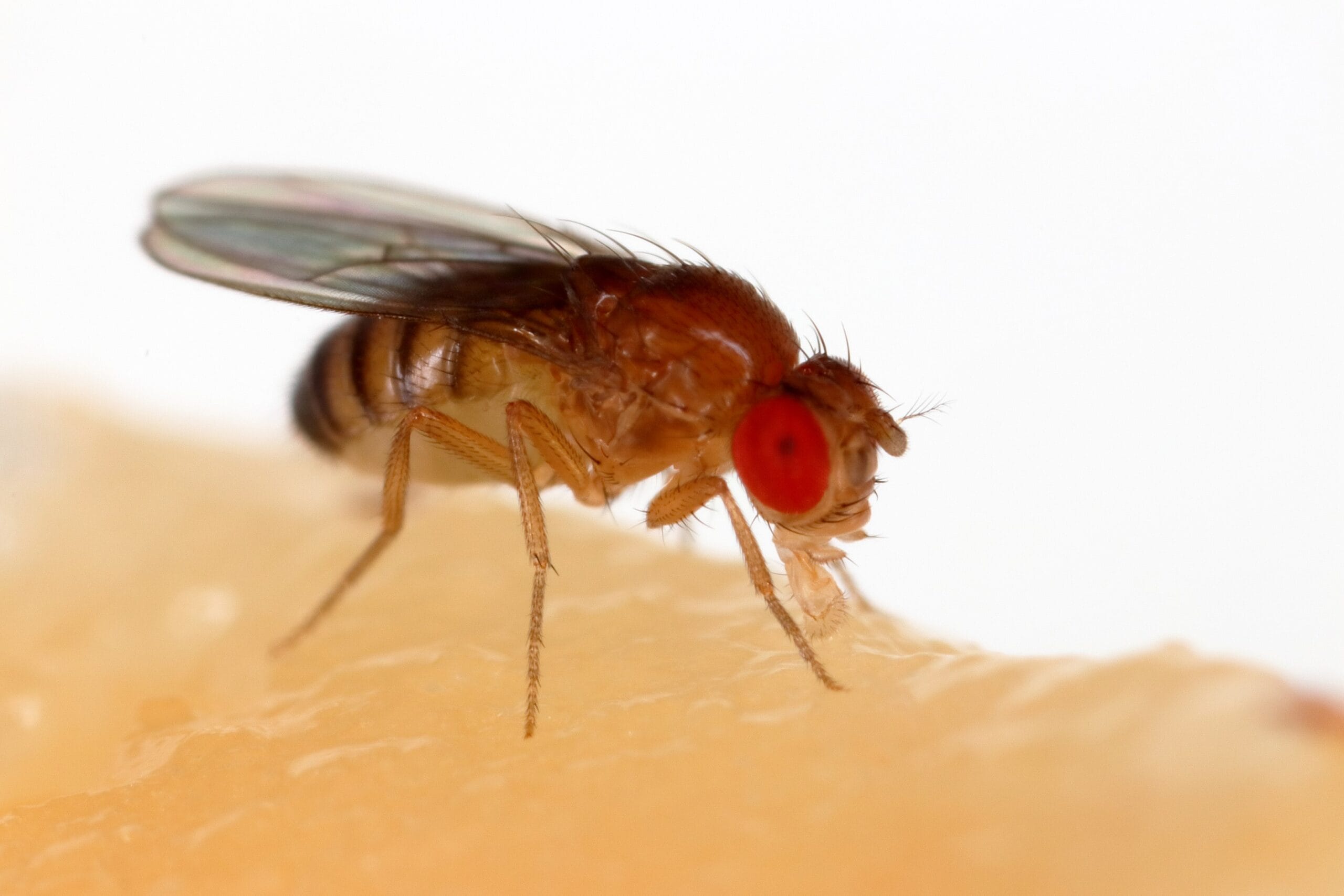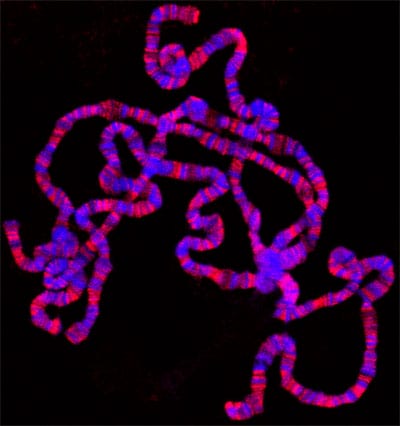Model organisms: the fruit fly

The fruit fly (Drosophila melanogaster) has been used in research for more than 100 years, revealing important information about genetics and development.
- Model organisms are non-human species that are used in research to help us understand specific areas of biology.
- The fruit fly (Drosophila melanogaster, or ‘Drosophila’) is the most used and one of the most well understood model organisms.
- Scientists use Drosophila to understand more about genetics and the way animals develop and grow.
The fruit fly (Drosophila melanogaster)
- The fruit fly (or ‘Drosophila’) is often used as a model for genetics and developmental research.
- Its genome was published in 2000. Today, scientists can use this information to engineer and mutate fruit fly genes to understand how they work, and how that applies to humans.
- For example, the formation of several organs – including the eye – are controlled by equivalent genes in both humans and fruit flies.
- Drosophila fruit flies measure approximately 3 mm in length. Their larvae are small, white and glossy. The adults have brown and black stripes on their back and bright red eyes – although these characteristics are easily changed by manipulating their genes.

Image credit: Sanjay Acharya, WikiMedia Commons
What have we learned using the Drosophila fruit fly in research?
Drosophila fruit flies have been used in research for more than 100 years. They have revealed a great deal about the basics of genetics, development and processes in the body, including:
- The mechanisms of genetic inheritance, where certain characteristics are passed down between generations.
- The way cells in the body communicate with each other, by receiving and responding to chemical messages.
- How our cells divide – and what happens when this process goes wrong, leading to the development of conditions like cancer.
What are some of the benefits and limitations of using the fruit fly as a model organism?
Benefits of using the fruit fly
- They’re easy and inexpensive to look after in the lab, at room temperature. They need a simple diet of cornmeal (carbohydrate) and yeast extract (protein), changed every 10-14 days.
- They have a short reproduction cycle – a female can produce eggs at about 8-14 days of age and may lay up to 50 eggs per day. This means several generations can be observed in a matter of months.
- Their genome is much simpler than a human’s and is relatively easy and inexpensive to mutate or alter for genetic experiments.
- The genes that are shared between humans and Drosophila fruit flies are related, so genetic experiments can reveal important information about human biology. Around 75% of the genes that cause disease in humans are also found in the fruit fly.
- Their chromosomes are large and ‘polytene’ – meaning they have barcode-like banding patterns of light and dark. Early in genetics research, this meant scientists could use the microscope to understand and identify chromosomal rearrangements.

Limitations of using the fruit fly
- The anatomy of the brain and other major organs are very different between humans and Drosophila fruit flies.
- Although there are genes in the fruit fly that are equivalent to human genes, they don’t all act in the same way.
- We don’t have an easy measure of complex behaviours.
- Some drugs that work in the fruit fly don’t work or aren’t safe in humans.
- We don’t fully understand what could happen if genetically engineered animals entered the natural ecosystem.
- As with all animal research, there are ethical and moral questions to consider.